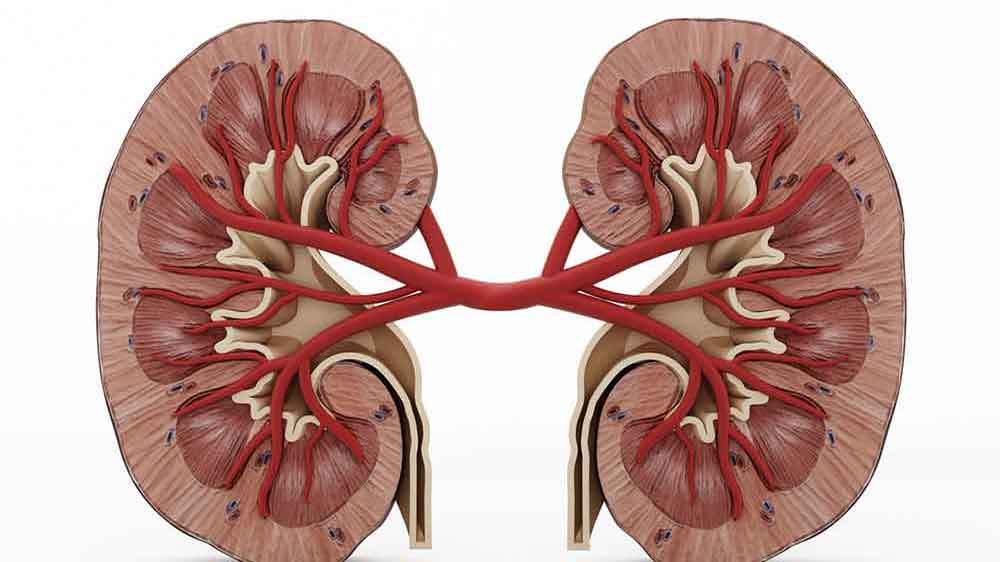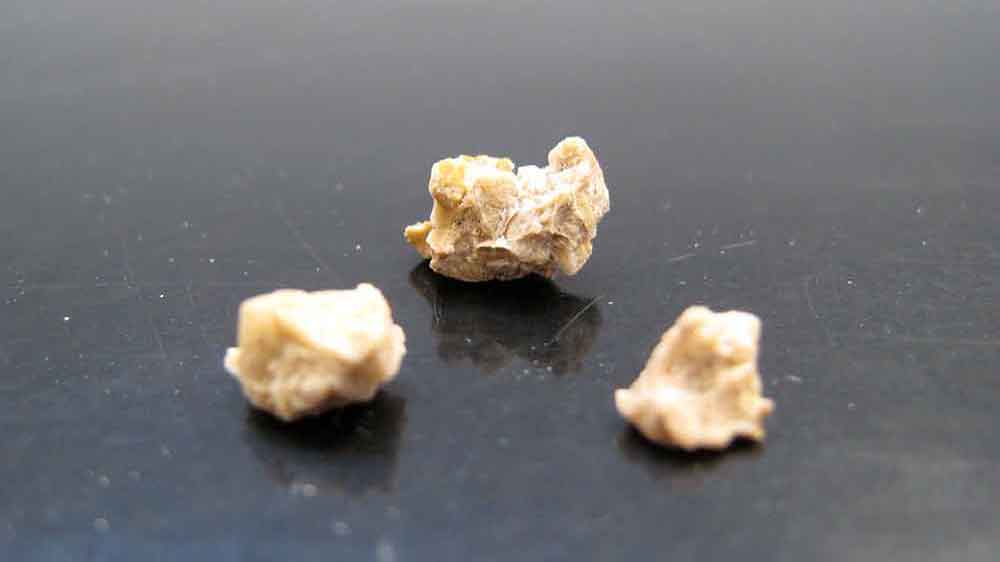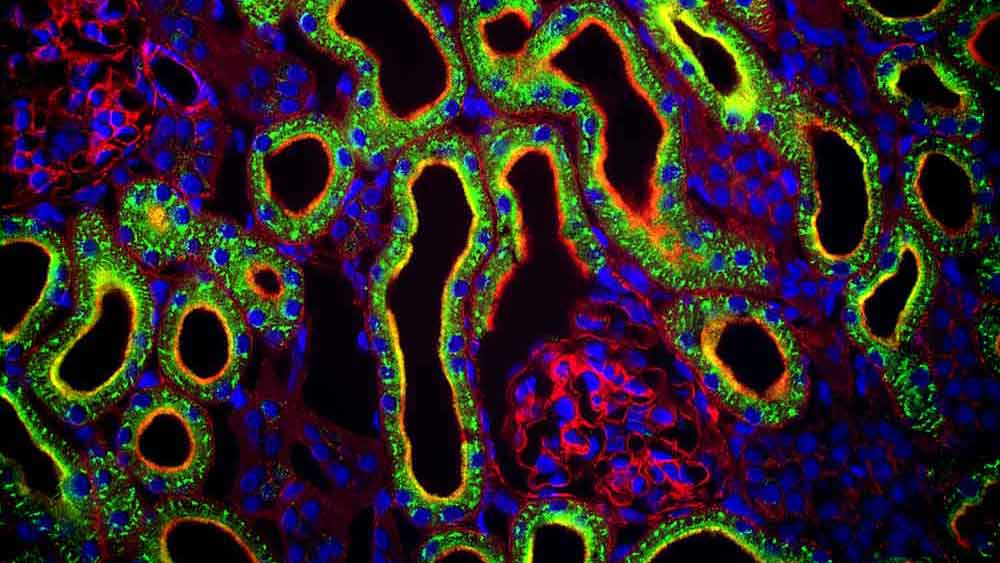Why Kidneys Form Stones
Kidney specialists at the universities of Zurich, Basel, Geneva, Lausanne and Bern, as well as various hospitals, have joined together to form the research conglomerate Kidney.CH. They want to gain a better understanding of the processes in the kidneys at the molecular and genetic levels. Specific areas of their research are the regulation of oxygen by the naturally occurring hormone EPO, and the mechanism by which the kidneys maintain the correct balance of minerals, bases and acids. Another focal point is the question of why some kidneys form stones and others don’t, and what is the best way to prevent them.
Major kidney stones study
Sixty percent of people who suffer from kidney stones have a genetic predisposition to the problem. Now a major study, the Swiss Kidney Stone Cohort, is examining whether and to what extent a kidney-friendly diet and an active lifestyle can compensate for the genetic disposition. The Swiss Kidney Stone Cohort is one of the world’s most comprehensive studies into kidney stones.
The program began six years ago, and research with trial participants is set to continue until 2022. Anyone who presents with kidney stones at the university hospitals in Zurich, Lausanne, Geneva, Bern or Aarau is asked whether they want to take part in the Swiss Kidney Stone Cohort. If they agree, the most important test data as well as blood and urine samples are taken and stored anonymously in a biobank. The hospitals involved evaluate the data and samples continuously and make them available for selected research projects. To date a total of around 800 women and men between the ages of 18 and 85 have taken part. The aim is to register a total of 1,000 people with kidney stones and 250 without.
Too much phosphate and salt
The main question the Swiss Kidney Stone Cohort seeks to answer is the effect of western nutritional habits on kidney stones. Eating habits in Switzerland are characterized by large amounts of phosphates, salt (sodium chloride) and animal proteins. These are necessary components of the human diet – but they are not needed in excessive amounts. The food industry, however, adds salt and phosphates as preservatives and flavor enhancers to sausage products and processed foods such as frozen pizza and soft drinks. This leads to many consumers eating what doctors consider to be an unhealthy amount of salt and phosphates and thus putting too much stress on their kidneys. It is our kidneys’ job to eliminate excess salt and phosphates and balance out any high acidity.
Acids and bases in the metabolism
The food that we eat is metabolized through our digestion – it gets broken down into its individual constituents and made available to the cells via the blood.
If we eat meat with broccoli, for example, acids are produced as a byproduct of the process of breaking down the animal protein, while when vegetables are broken down bases are produced. For healthy kidneys, balancing out the “acidic” meat in individual cases poses no problem. But if kidney function is impaired through illness or medication, or if meat consumption is too high over a long period of time, the animal protein can lead to an excess acid load.
Kidney stones and osteoporosis
In an acid-loaded body, the kidneys need bases and they find them in the bones. In the bones, the bases are bound to calcium. If the kidneys source bases from the bones, the calcium comes with them. If the imbalance persists, then there is a lack of calcium in the bones, leading to osteoporosis. The calcium also builds up in the kidneys and causes the formation of kidney stones. A study at the university hospital of Bern (Inselspital) and other international studies have shown that kidney stones and osteoporosis go hand in hand.
Kidney-friendly nutrition
For someone who is predisposed to kidney stones, it is essential to eat a kidney-friendly diet. The most important thing to remember is: Drink enough water! And: Eat lots of fruit and vegetables. A diet high in fruit and vegetables causes the kidneys to excrete more citrate in the urine, thus preventing the formation of crystals – crystals in the urine are the starting point for the formation of kidney stones. Vegetables that contain oxalates such as raw spinach, Swiss chard and rhubarb should be avoided, however, as the oxalic acid they contain can bind with calcium in the kidneys to form hard calcium oxalate crystals, which are what most kidney stones consist of.
More men affected
Healthy eating can counteract the tendency for kidney stones to form, but the influence of diet differs in men and women. So Ms Miller can have green tea (oxalic acid) and yoghurt (calcium) for breakfast, dark chocolate (oxalate) for her morning snack, sausages (phosphate, acid), spinach (oxalate) and Parmesan (calcium) for lunch and in the evening treat herself to a rhubarb compote (oxalate), while Mr Miller would have long ago developed kidney stones if he followed the same diet. In fact, men are twice as often affected by kidney stones as women. Why? That is another of the many questions to which the researchers behind the Swiss Kidney Stone Cohort are chasing answers.


